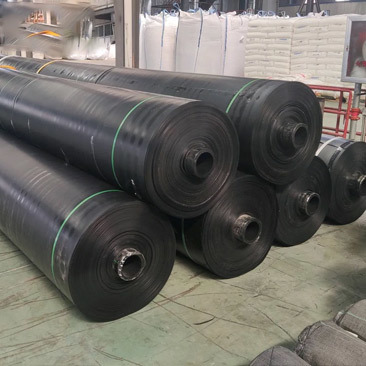Understanding PE Geomembrane: A Key Component in Construction and Civil Engineering
Release time:
2025-09-25
Polyethylene (PE) geomembranes are advanced synthetic materials widely used in construction and civil engineering projects, particularly in applications that require waterproofing and containment solutions. These geomembranes are composed of high-density polyethylene (HDPE) or low-density polyethylene (LDPE), making them durable, flexible, and resistant to various chemicals and environmental condi
Polyethylene (PE) geomembranes are advanced synthetic materials widely used in construction and civil engineering projects, particularly in applications that require waterproofing and containment solutions. These geomembranes are composed of high-density polyethylene (HDPE) or low-density polyethylene (LDPE), making them durable, flexible, and resistant to various chemicals and environmental conditions.
One of the primary uses of PE geomembranes is in landfill liners. They serve as a barrier to prevent leachate, a potentially harmful liquid that can contaminate groundwater, from escaping into the surrounding soil. By effectively containing waste materials, these geomembranes play a crucial role in environmental protection and sustainability.
In addition to landfill applications, PE geomembranes are also utilized in the construction of ponds, reservoirs, and canals, where they help to prevent water loss due to seepage. This is particularly important in areas where water conservation is imperative. The impermeability of PE geomembranes ensures that water bodies maintain their levels, which is essential for ecosystems and agriculture alike.
Another area where PE geomembranes shine is in the mining industry. They are used to line tailings storage facilities, providing a reliable barrier that minimizes the risk of contaminating surrounding areas. This application is not only crucial for environmental safety but also for compliance with regulatory standards that protect natural resources.
The installation of PE geomembranes is generally straightforward. They can be welded together using specialized equipment, creating seamless and durable barriers. This feature enhances their effectiveness in preventing leakage and ensures long-lasting performance in various applications.
From a cost-effectiveness perspective, PE geomembranes are an attractive option for many construction projects. Their longevity and low maintenance requirements contribute to reducing overall project costs while ensuring compliance with environmental regulations. Moreover, their lightweight nature allows for easier handling and transportation, further streamlining the construction process.
In summary, PE geomembranes are essential materials in the realm of construction and civil engineering. Their versatility, durability, and effectiveness in containment and waterproofing applications make them invaluable assets in various projects. Professionals in the industry should consider the advantages of incorporating PE geomembranes into their designs to enhance performance and sustainability in building practices. Understanding the properties and applications of this material can lead to more informed decisions and successful project outcomes.
One of the primary uses of PE geomembranes is in landfill liners. They serve as a barrier to prevent leachate, a potentially harmful liquid that can contaminate groundwater, from escaping into the surrounding soil. By effectively containing waste materials, these geomembranes play a crucial role in environmental protection and sustainability.
In addition to landfill applications, PE geomembranes are also utilized in the construction of ponds, reservoirs, and canals, where they help to prevent water loss due to seepage. This is particularly important in areas where water conservation is imperative. The impermeability of PE geomembranes ensures that water bodies maintain their levels, which is essential for ecosystems and agriculture alike.
Another area where PE geomembranes shine is in the mining industry. They are used to line tailings storage facilities, providing a reliable barrier that minimizes the risk of contaminating surrounding areas. This application is not only crucial for environmental safety but also for compliance with regulatory standards that protect natural resources.
The installation of PE geomembranes is generally straightforward. They can be welded together using specialized equipment, creating seamless and durable barriers. This feature enhances their effectiveness in preventing leakage and ensures long-lasting performance in various applications.
From a cost-effectiveness perspective, PE geomembranes are an attractive option for many construction projects. Their longevity and low maintenance requirements contribute to reducing overall project costs while ensuring compliance with environmental regulations. Moreover, their lightweight nature allows for easier handling and transportation, further streamlining the construction process.
In summary, PE geomembranes are essential materials in the realm of construction and civil engineering. Their versatility, durability, and effectiveness in containment and waterproofing applications make them invaluable assets in various projects. Professionals in the industry should consider the advantages of incorporating PE geomembranes into their designs to enhance performance and sustainability in building practices. Understanding the properties and applications of this material can lead to more informed decisions and successful project outcomes.






